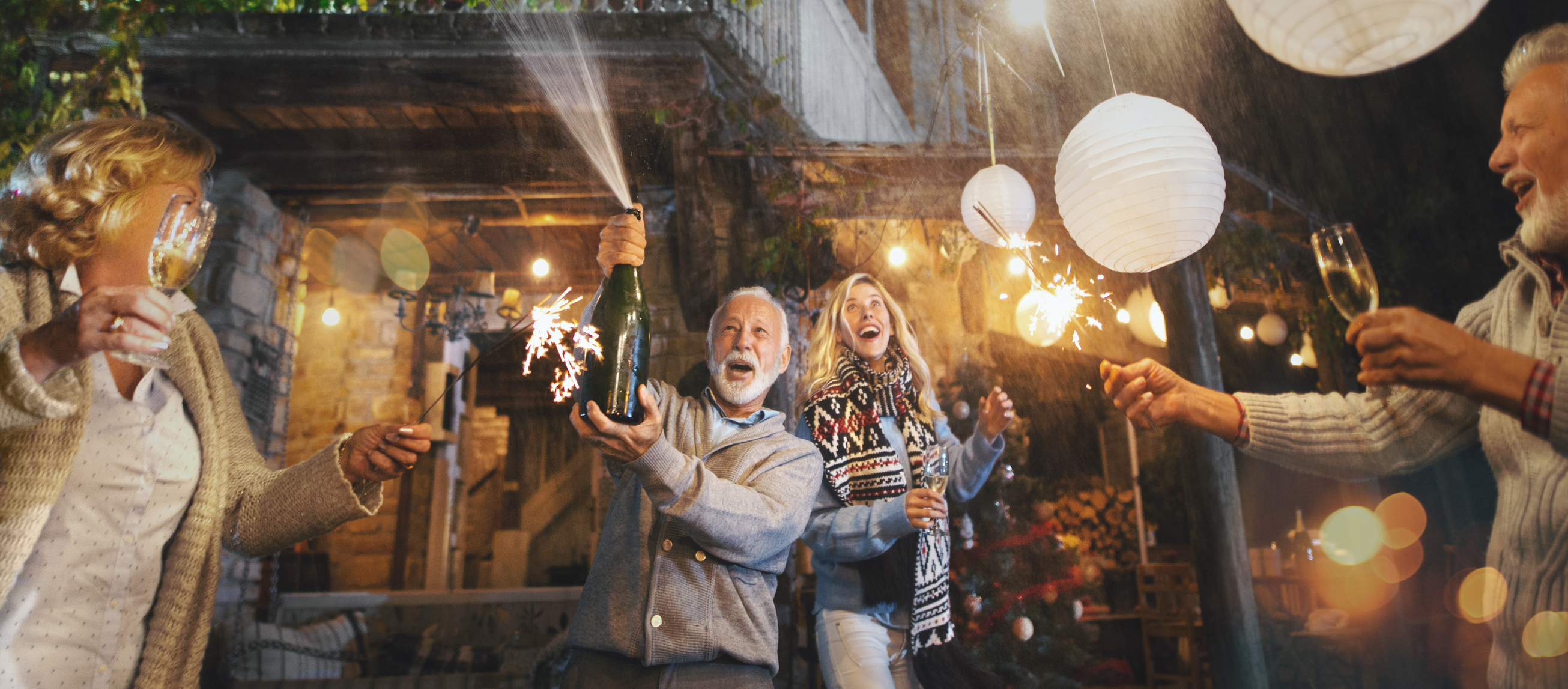Understand Your ESOP Benefit: The Diversification Option
You can sell your shares back to the company during your employment years, called diversification in ESOP terms. What are the pros and cons?


Editor’s note: This is part five of a six-part series in which Peter Newman, CFA, of Peak Wealth Planning, explains the benefits of employee ownership for the U.S. workforce. There are more than 6,500 Employee Stock Ownership Plans, or ESOPs, in the U.S. covering almost 14 million employees. See below for the links to the previous articles in the series.
Building upon the foundational understanding provided in the earlier articles of this series, we now shift our focus to a pivotal question faced by Employee Stock Ownership Plan (ESOP) participants: Should you opt for the diversification option?
In this article, we delve into the pros and cons of rolling over your diversification vs spending those funds straight away.
From just $107.88 $24.99 for Kiplinger Personal Finance
Become a smarter, better informed investor. Subscribe from just $107.88 $24.99, plus get up to 4 Special Issues

Sign up for Kiplinger’s Free Newsletters
Profit and prosper with the best of expert advice on investing, taxes, retirement, personal finance and more - straight to your e-mail.
Profit and prosper with the best of expert advice - straight to your e-mail.
In a typical scenario, diversification means the ability to sell shares back to the company during your employment years, while distribution refers to selling back shares post separation from the company or upon retirement. We're here to help you navigate these diversification considerations to make an informed decision for your ESOP participation.
About the diversification option
Even if your company is doing well and the share value is increasing, participants may prefer to diversify their investments to reduce concentration in a single company. This is the process of selling shares in your ESOP account and reinvesting the proceeds in a separate investment account.
Five reasons to diversify your company stock:
- If you are planning to retire before Medicare age 65, you may need funds to pay out of pocket for health insurance.
- By spending from an IRA rollover account or 401(k) during early years of retirement, you could delay Social Security until age 70 to receive a 24% higher benefit.
- If your stock has done well and makes up a significant portion of your net worth, you can “take some chips off the table” and diversify your retirement investments.
- If your employee-owned company is in a cyclical industry and the stock valuations have been high, this might be a good time to reduce exposure.
- Your financial plan shows you have sufficient investments to meet your retirement income needs, so it’s not necessary to continue taking concentrated stock risk.
Remember that concentrated risk builds wealth, and diversification of your investments preserves wealth. Even if your ESOP account is doing really well, consider whether to diversify carefully. Individual company stocks can fluctuate up or down much more than a broad portfolio of thousands of stocks and bonds.
Three reasons not to diversify your company stock:
- You or your spouse have significant 401(k), IRA or other investments, making the ESOP less than 20% of your retirement nest egg.
- The company stock is outperforming the broader U.S. stock market. You believe this will continue and are comfortable with concentrated risk.
- You plan on working until age 65 or 67 and will not need the proceeds from diversification to bridge an income gap until Medicare or Social Security full retirement age.
Diversification: Timeline and process
You may begin to diversify shares in your ESOP account when you reach age 55 and have 10 years of service. During ages 55 to 59, you can elect to sell up to 25% of the vested cumulative shares in your account. At age 60 and over, the limit is increased to 50% of the vested cumulative shares in your account.
Most ESOPs allow proceeds from the shares to be transferred into the company 401(k) plan, rolled over to another qualified retirement plan, or move to your IRA (individual retirement account). Or, you may request a payment be made directly to you. If you request a direct payment and do not roll over to a qualified, tax-deferred retirement account, you are responsible for taxes and penalties when you file your tax return for the year you received a payment.
Age 55 | Cumulative shares | Amount at $100 per share |
ESOP ending balance | 1,000 | $1 million |
Elect 25% diversification | -250 | -$250,000 |
Balance after diversification | 750 | $750,000 |
In the above example, $250,000 could be rolled to a 401(k) or IRA, or a check for $250,000 could be requested. If a check is requested, the individual would be required to pay income tax and penalties (if under age 59½). An individual could diversify less than 25% of their shares and continue to have the opportunity to diversify in future years.
Keep in mind that depending on your company’s ESOP plan year, it could take up to eighteen months to receive a check. It’s important to diversify early or have other funds available if you are counting on your ESOP payout for immediate needs. Ask your plan representative about timing.
Diversification: Choices and taxes
When making your diversification request, you can designate the form of payment. The following options should be available to you. Check with your ESOP representative to confirm.
Option 1: Rollover
Make a direct rollover of your distribution to another qualified retirement plan, such as a 401(k) or IRA, and continue to defer paying taxes. You can also opt to receive a check, in which case you have 60 days after the check is issued to roll the money into another qualified retirement plan or IRA to defer paying taxes.
Five reasons to roll over your diversification proceeds to an IRA account:
- You'll continue to grow wealth by investing in a variety of stocks, bonds, ETFs, or mutual funds.
- You'll have many more investment options than with a 401k account.
- Your IRA's financial advisor can help you with investments and forecasting retirement income.
- You'll spread the taxes owed on the stock over many years instead of paying a large amount all at once, often at a higher marginal tax bracket.
- Using planned withdrawals from your IRA, you’ll be able to create a steady retirement income to replace your paycheck.
If you do not elect a direct rollover and receive the payment by check, you have 60 days after the check is issued to roll the money into another qualified retirement plan or IRA to defer paying taxes. We recommend that you elect a direct rollover to avoid misplacing the check.
Option 2: Direct payment
Elect to receive a direct payment and pay applicable taxes and early withdrawal penalty (if any, applies under age 59½).
Five reasons to spend your diversification proceeds:
- You and your spouse have enough saved that spending the cash won’t hurt your future retirement income.
- Your spouse or partner has a large pension, or other income stream, that is sufficient to meet your retirement needs.
- You have credit cards or other debt with extremely high interest rates that you need to repay.
- You have significant financial pressures that outweigh saving for retirement, such as replacing a wrecked car, paying medical bills or helping an aging parent.
- You calculated the income tax plus applicable IRS penalties and are OK with paying that amount this year.
The hybrid approach: Spend some/roll over some
Your company may provide you with an option to spend part of your diversification proceeds and roll over a portion to your IRA or company 401(k) account. Consult with your ESOP representative if you are interested in this option.
Want more information? Download Peak Wealth Planning’s guide to ESOP diversification and retirement income. Do you need to forecast the income your ESOP can generate? The Peak Wealth Planning team can handle that and manage your investments, too.
Other Articles in This Series
- Part one: Five Key Advantages to Working at an Employee-Owned Company
- Part two: How Does an Employee Stock Ownership Plan, or ESOP, Work?
- Part three: Five Things Employee Owners Need to Know About Their ESOP
- Part four: Should an ESOP Be Your Only Retirement Account?
- Part six: How Much Retirement Income Could Your ESOP Generate?
Profit and prosper with the best of Kiplinger's advice on investing, taxes, retirement, personal finance and much more. Delivered daily. Enter your email in the box and click Sign Me Up.

Peter Newman founded Peak Wealth Planning, LLC in 2014 to provide financial planning and investment management for individuals who built their wealth through ESOP participation, business ownership or real estate investing. He helps families diversify their concentrated stock, reduce estate taxes, preserve wealth and generate stable retirement income. Peter holds the Chartered Financial Analyst designation, considered by many to be the gold standard for investment management.
-
 Santa Claus Rally at Risk as Tech Stocks Slump: Stock Market Today
Santa Claus Rally at Risk as Tech Stocks Slump: Stock Market TodayThe Nasdaq Composite and Dow Jones Industrial Average led today's declines as investors took profits on high-flying tech stocks.
-
 7 Ways to Save Money on Almost Everything
7 Ways to Save Money on Almost EverythingHigh prices got you down? These strategies can help you reap deep discounts on everyday spending.
-
 My Top 10 Stock Picks for 2026
My Top 10 Stock Picks for 2026Each year, we ask an expert to pick 10 stocks that have the potential to beat the market over the next 12 months. Here are his choices for 2026.
-
 Santa Claus Rally at Risk as Tech Stocks Slump: Stock Market Today
Santa Claus Rally at Risk as Tech Stocks Slump: Stock Market TodayThe Nasdaq Composite and Dow Jones Industrial Average led today's declines as investors took profits on high-flying tech stocks.
-
 My Top 10 Stock Picks for 2026
My Top 10 Stock Picks for 2026Each year, we ask an expert to pick 10 stocks that have the potential to beat the market over the next 12 months. Here are his choices for 2026.
-
 We're Still Bullish on Stocks
We're Still Bullish on StocksWe're still bullish on stocks for 2026, but now is the time for investors to pull in their horns and dial down risk.
-
 These Were the Hottest S&P 500 Stocks of the Year
These Were the Hottest S&P 500 Stocks of the YearAI winners lead the list of the S&P 500's top 25 stocks of 2025, but some of the names might surprise you.
-
 Stocks That Could Take Off in the New Year
Stocks That Could Take Off in the New YearThere are three areas of potential in the 2026 stock market.
-
 Now That You've Built Your Estate Planning Playbook, It's Time to Put It to Work
Now That You've Built Your Estate Planning Playbook, It's Time to Put It to WorkYou need to share details with your family (including passwords and document locations) and stay focused on keeping your plan up to date.
-
 I'm a Wealth Adviser: These 10 Strategies Can Help Women Prepare for Their Impending Financial Power
I'm a Wealth Adviser: These 10 Strategies Can Help Women Prepare for Their Impending Financial PowerAs women gain wealth and influence, being proactive about financial planning is essential to address longevity and close gaps in confidence and caregiving.
-
 How to Make 2026 Your Best Year Yet for Retirement Savings
How to Make 2026 Your Best Year Yet for Retirement SavingsMake 2026 the year you stop coasting and start supercharging your retirement savings.